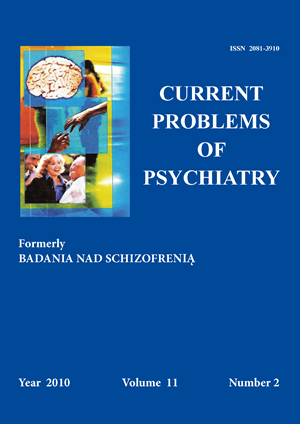The Impact of the Smolensk Air Crash on the Attributionof Personality Traits to Political Parties
Keywords:
party image, personality traits, political party, air crashAbstract
The aim of the study was to check whether and in what way the tragic death of the Polish political elite near Smolensk on 10 April 2010 affected the perception of politicians and political parties in Poland. A comparison was made between survey results concerning personality traits attributed to political parties two weeks before and two weeks after the crash of the presidential plane. During both stages of the study, 140 students described six Polish political parties using a list of personality descriptors. The results of the study showed that the experience of tragic events, the period of mourning, the mobilisation of society, and the insight that these afforded into the more human side of politicians changed the perception of parties on the Polish political scene. The most extensive of the changes observed were the increase of the parties' perceived openness for cooperation and the attribution of fewer asocial traits to them. The change concerned the major political parties, regardless of how many members each of them actually lost in the crash.
References
1. Caprara, G.V., Zimbardo, P.G. Personalizing politics: a congruency model of political preference. American Psychologist, 2004; 59(7): 581-594.
2. Wattenberg, M.P. The rise of candidate-centered politics: presidential elections of the 1980’s. Cambridge, MA; Harvard University Press: 1991.
3. Holewa, A., Gorbaniuk, O. Taksonomia wolnych skojarzeń z partiami politycznymi w czasie wyborów parlamentarnych w 2007 roku: badania studentów lubelskich uczelni. In: Oleszkowicz A., Zdybek P. (ed.), Psychologia ilości, psychologia jakości. Uzupełniające się spojrzenia. Wrocław; Atut: 2009, pp.71-85.
4. Aalberg, T., Jenssen, A.T. Gender Stereotyping of Political Candidates: An Experimental Study of Political Communication. Nordicom Review, 2007; 28(1): 17-32.
5. Hamill, R., Lodge, M., Blake, F. The Breadth, Depth, and Utility of Class, Partisan, and Ideological Schemata. Ameri-can Journal of Political Science, 1985; 29(4): 850-870.
6. Conover, P.J., Feldman, S. Candidate Perception in an Ambiguous World: Campaigns, Cues, and Inference Processes. American Journal of Political Science, 1989; 33(4): 912-940.
7. Hayes, D. Candidate Qualities through a Partisan Lens: A Theory of Trait Ownership. American Journal of Political Science, 2005; 49(4): 908-923.
8. Rahn, W.M. The Role of Partisan Stereotypes in Information Processing about Political Candidates. American Journal of Political Science, 1993; 37(2): 472-496.
9. Borkenau, P., Liebler, A. Convergence of stranger rating of personality and intelligence with self-ratings, partner ratings, and measured intelligence. Journal of personality and social psychology. 1993; 65(3): 546-553.
10. Kenny, D., Albright, L., Malloy, T., Kashy, D., Consensus in interpersonal perception: acquaintance and Big Five. Psychological Bulletin, 1994; 116(2): 245-258.
11. Costantini, E., Craik, K.H. Personality and politicians: California party leaders, 1960–1976. Journal of Personality and Social Psychology, 1980; 38(4): 641-661.
12. Caprara, G.V., Barbaranelli, C., Consiglio, C., Picconi, L., Zimbardo, P.G. (2003). Personalities of Politicians and Voters: Unique and Synergistic Relationships. Journal of Personality and Social Psychology, 2003; 84(4): 849-856.
13. Smith, I.G. Conceptualizing and testing brand personality in British politics. Journal of Political Marketing, 2009; 8(3): 209-232.
14. Schneider, H. Branding in politics-manifestations, relevance and identity-oriented management. Journal of Political Marketing, 2004; 3(4): 41-67.
15. Gorbaniuk, O., Holewa, A., Krzyszycha, G. Struktura cech osobowości przypisywanych partiom politycznym 2010; (in print).
16. Angleitner, A., Ostendorf, F., John, O.P. Towards a taxonomy of personality descriptors in German: a psycho-lexical study. E. J. Personality, 1990; 22(4): 89-118.


